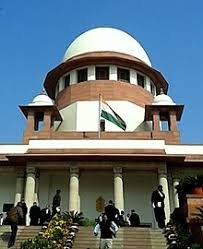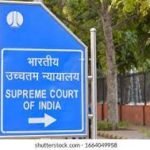This case involves a long-standing dispute over the formal recognition of Kakiho Village (Respondent No. 1) in Nagaland. The appellant, Old Jalukai Village Council, challenged the Gauhati High Court’s order directing the State to recognise Kakiho Village, arguing that the latter is sought to be established on their ancestral land.
The process of village recognition in Nagaland is rooted in customary traditions and is governed by Office Memoranda (O.M.s) from 22.03.1996 and 01.10.2005. These O.M.s require specific conditions, including a minimum population/households, sufficient land, indigenous inhabitants, and crucially, a ‘No Objection Certificate’ (NOC) from parent villages if a new village is established on their ancestral land. The 2005 O.M. additionally mandated a 30-day public notice period for objections.
Kakiho Village (Respondent No. 1), affiliated with the ‘Sumi’ tribe, was allegedly established on 01.09.2007. While it claimed to have obtained NOCs from its parental Khumishi ‘A’ Village (Zunheboto District) and neighbouring villages, the Old Jalukai Village Council (appellant), belonging to the ‘Zeliangrong’ tribe, lodged an objection on 16.10.2009 to the public notice, claiming the land ancestrally belonged to them. The State had initially kept Kakiho Village’s recognition in abeyance due to an inter-district boundary dispute between Peren (where Old Jalukai is) and Dimapur (where Kakiho claims to be) districts. The High Court had dismissed the relevance of this boundary dispute to the recognition. The appellant was not a party to the High Court proceedings.
Law Involved: The judgment involves interpretations of:
- Article 371A of the Constitution of India: This special provision safeguards Naga customary law and procedure, including matters related to “ownership and transfer of land and its resources”. It stipulates that no Act of Parliament concerning these matters applies to Nagaland unless adopted by the Legislative Assembly.
- Nagaland Village and Area Councils Act, 1978: Specifically, Section 3, which defines a ‘Village’ and requires it to be established according to the “usage and customary practice of the population of the area,” and that the land either belongs to the population or is given by the lawful owner.
- Office Memoranda (O.M.s) dated 22.03.1996 and 01.10.2005: These executive instructions lay down the detailed criteria and procedures for village recognition, including the requirement of No Objection Certificates from parent villages (if on ancestral land) and from neighbouring villages, as well as the public notice process.
- Principles of Judicial Review of Executive Decisions: The Court discussed the limited scope for judicial interference in government policy decisions unless they are arbitrary, capricious, or mala fide.
Reasoning : The Supreme Court provided a nuanced reasoning for its decision:
- Non-Compliance with Recognition Criteria: The Court found that the High Court’s conclusion that all conditions for recognition were met was flawed because it was not “alive to the case of the appellant”. The appellant had indeed raised objections to the public notice, which the Deputy Commissioner had sought more details on, and the extent to which these were considered was unclear. The very purpose of a public notice is to allow interested parties, especially those potentially adversely affected by the recognition (like the appellant claiming ancestral land ownership), to raise objections. The State has a “bounden duty” to “adequately and appropriately consider any and all such objections”.
- Irrelevance of Inter-District Boundary Dispute: The Court decisively stated that the “inter-district boundary dispute had no nexus whatsoever with the issue of recognition of the respondent no. 1 village”. While previous committees (like the Ezong Committee) had suggested deferring recognition in disputed areas, a more recent Cabinet Sub-Committee Report (2021) indicated that Kakiho Village does not fall within the “buffer-zone/area” of the inter-district dispute. Therefore, the State’s continued reliance on this dispute to delay recognition was deemed untenable.
- Judicial Restraint vs. Executive Action: While acknowledging the principle of judicial non-interference in policy decisions, the Court emphasised that the State cannot indefinitely defer a decision. The complex factual dispute regarding ancestral land ownership is best suited for the State authorities, given their familiarity with local customs and ground realities. The Court noted the “enormous reluctance” of the State to consider the appellant’s objections on their merits.
- Impact of Unrecognised Status: The Court acknowledged the deprivation of essential facilities and schemes (e.g., V.D.B., PWD, health, education, food security, agriculture) faced by unrecognised villages, which affects their fundamental rights. While some basic benefits might be availed through parent villages, critical infrastructure and developmental schemes requiring permanent structures remain inaccessible.
Holding:
The Supreme Court dismissed the Civil Appeal. However, it set aside the High Court’s observations regarding the compliance with the O.M.s for village recognition. The Court directed the State authorities to re-issue a public notice for the recognition of Kakiho Village and to “exhaustively consider all the objections”, including those raised by the Old Jalukai Village Council. A strict timeline of six months was given to the State to complete this process and make a final decision on Kakiho Village’s recognition. The matter was treated as “part heard” and will be notified for further review after six months by the same Bench.
Old Jalukai Village Council V. Kakiho Village & Ors.
Supreme Court: 2025 INSC 766: (DoJ 23-05-2025)








